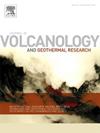Evolution and polycyclic nature of a maar-diatreme volcano as constrained by changing external factors
Abstract
The volcanic evolution of Szent György Hill in the Miocene-Pleistocene Bakony–Balaton Highland Volcanic Field (BBHVF) is examined. Image analysis of cut rock surfaces was conducted to reveal the ratio of different juvenile and lithic components within the pyroclastic samples collected from different layers of the pyroclastic sequence. Results suggest decreasing phreatomagmatic activity over time, with a shift to magmatic-dominated eruptions represented by decreasing ratio of the sideromelane volcanic glass and increasing ratio of the magmatically-fragmented components (basaltic clasts, tachylite) successively. The changing water supply is inferred to have been played a crucial role in changes of eruption style due to the variations of external water availability from the pre-volcanic porous-media aquifers of Miocene siliciclastic sedimentary rock-dominated substrate. The eruptive history of the Szent György Hill is characterized by distinct phases starting with an initial phreatomagmatic eruption in water-saturated clastic sediments forming a shallow maar crater accompanied with a formation of a protodiatreme. Once the eruption locus reached the local karst water level, the phreatomagmatic explosions became sustained as recorded in the tephra succession by an increased accidental lithic content and the presence of ash aggregates indicating vapor-rich ejecta and ash accretion. The depletion of external water supply generated a subsequent magmatic explosive phase with lava effusion within the newly formed crater, building confined lava accumulation within. During the last phase of the eruptive sequence, phreatomagmatism was renewed, building up an intra-maar tuff ring, and finally followed by a spatter cone after a renewed repeated phreatomagmatic-magmatic transition. This study highlights the polycyclic nature of Szent György Hill's volcanic activity creating a complex volcanic edifice and suggesting a common eruption scenario for small-volume eruptions within combined aquifers that are dominated by the thick topmost porous media over high water yield karstic systems. These findings emphasize the role of eruption dynamics of monogenetic volcanic systems controlled by combined aquifer influence driven not only by the pure external conditions but also the evolving crater's hydrogeology.

 求助内容:
求助内容: 应助结果提醒方式:
应助结果提醒方式:


